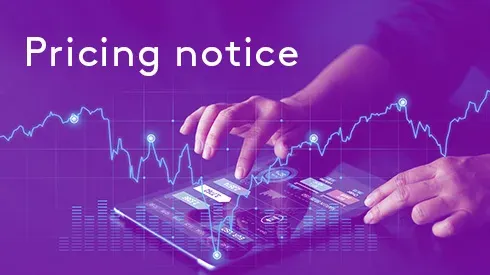But fines in their current shape and form do not conform to the steel industry’s growing aversion to pollution, which is why the decarbonization of iron ore fines is a trend which is very much here to stay, according to Matthias Gabriel, director of the ferrous product group at technology provider Metso Outotec.
A key trend which Fastmarkets has observed is the rise of direct reduction as the preferred technology for steelmaking, because it skips the polluting sintering process and use of coke as reductant. The sintering of iron ore fines has long been criticized as a key culprit in carbon dioxide emissions in the steel industry.
This expected rise in demand for direct-charge materials is clear, with major Brazilian miner Vale looking to ramp up its production of pellet and briquette to around 22% of its total production, or about 100 million tonnes, after 2030, from 33 million tonnes in 2022. But its iron ore production will grow more slowly, to more than 360 million tonnes after 2030, from 310 million tonnes in 2022.
The decarbonization of iron ore will happen through various routes, Gabriel said, including how they are processed, the fuels and carbon carriers used in the processes, as well as the sources of electricity.
Some of the more obvious developments which will be clearer in the near future include direct reduction of fine ores, including high-grade ores like Fastmarkets’ iron ore 65% Fe Brazil-origin fines and Fastmarkets’ iron ore 66% Fe concentrate, for hot-charging into electric-arc furnaces, as well as low-grade ores for use in direct-reduced iron (DRI) units, Gabriel added.
Metso Outotec has recently launched a proprietary DRI smelting technology, which if combined with 100% hydrogen-based Circored direct-reduction technology, will accept lower-grade iron ores as well, according to Parizat Pandey, director of DRI at Metso Outotec.
Process flow from mine to steel

There is also a growing trend of miners starting to develop their own green technologies to reduce Scope 3 emissions in their products, which means that unique technologies will set miners apart when it comes to wringing more value from each unit of iron mined from the earth.
This is all while conforming to customers’ requirements on Scope 1-3 emissions, and also figuring out a distinctive marketing and sales strategy for their green iron ore products.
Visible within this growing trend of green steelmaking is alternative bonding methods, such as cold bonded pellets, which may ultimately affect logistics and transportability. For example, requiring different transport methods compared to typical iron ore pellets.
Alternative reduction methods using biocarbon, or different energy sources, is also an area of interest to miners and steelmakers.
Challenges ahead
The development of green iron ore is not without challenges for now.
The economic production and cost of green hydrogen on the scale required for large-scale production of green iron ore is still elusive.
There is also a need to study slag compositions and reducibility when undertaking integrated trial runs with different ore types, according to Gabriel.
“There is also a need to qualify a minimum amount of carbon in hot metal while using a 100% hydrogen-based reduction process, as well as the need for cheaper renewable electricity,” Gabriel said.
We expect full-scale deployment of green iron ore technologies to be deployed in the second half of this decade
“We expect full-scale deployment of green iron ore technologies to be deployed in the second half of this decade, especially as we are aiming to run our first Circored plant with zero-carbon emission in 2026.”
“Currently, there are lots of developments and trials in the pipeline of various technology providers. The success of preparing these raw materials is also dependent on many external factors such as availability of economic hydrogen and financing. Meanwhile, further efficiency improvements, driven e.g., by digitalization have to be explored, as well as maximizing scrap recycling to the fullest extent possible,” he added.
Green pellets?
In the meantime, pelletizing of iron ore concentrates remains a viable route to achieving green steel production including Fastmarkets’ pellet premiums prices, Iron ore pellet premium over 65% Fe fines, cfr China and Iron ore 65% Fe blast furnace pellet, cfr Qingdao. But the pelletizing process needs to change to achieve zero-carbon production.
Metso Outotec identified three major contributors to carbon dioxide (CO2) emissions: Fuel consumption, electric energy in use for the process fans and the solid fuel that is added to the raw mix, depending on the concentrate type.
“A simple substitution with green electricity, hydrogen as fuel and biomass as carbon carrier is a natural progression towards the decarbonization of the pelletizing process. Metso Outotec is currently developing LowNOx hydrogen burners which can reduce up to 90% of direct carbon dioxide emissions in the pelletizing process, while using green electricity for the entire plant,” Gabriel said.
“On magnetite ores, where solid fuel is not used, the only CO2 emissions left in the process comes from the carbonization reactions of additives, such as limestone,” he concluded.




